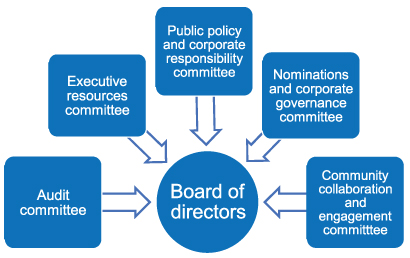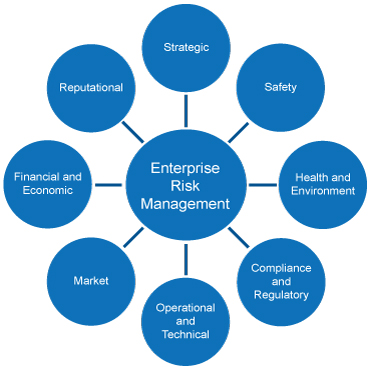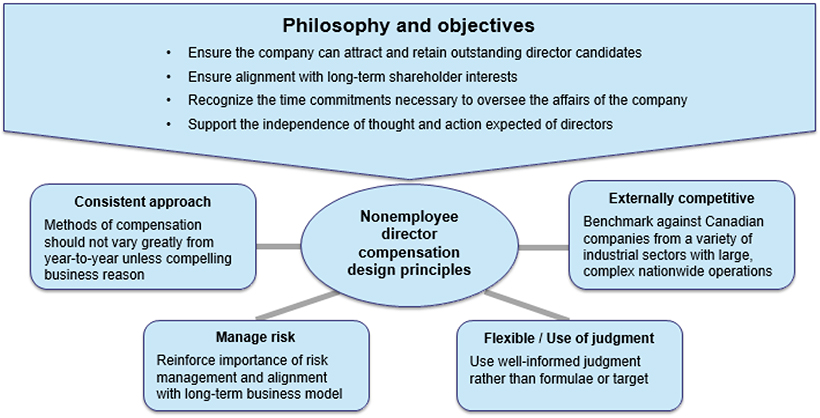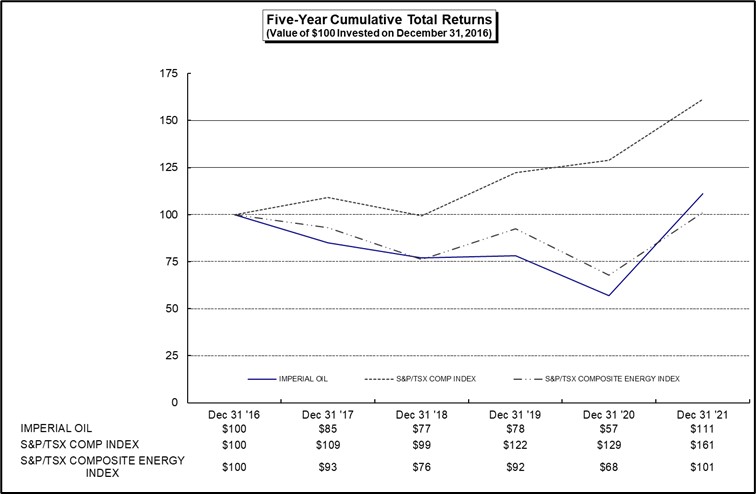Statements of future events or conditions in this report, including projections, targets, expectations, estimates, and business plans are forward-looking statements. Forward-looking statements can be identified by words such as believe, anticipate, intend, propose, plan, goal, seek, project, predict, target, estimate, expect, strategy, outlook, schedule, future, continue, likely, may, should, will and similar references to future periods. Forward-looking statements in this report include, but are not limited to, references to estimates, development, timing and recovery of reserves; the improvement of recovery through experimental operations; the development drilling program at Cold Lake; the timing, cost, efficiency and production of the Aspen project and expansion project at Cold Lake; the continued evaluation of other oil sands leases and unconventional assets; the company’s intention to market its interest in XTO Energy Canada, and operations continuing as normal throughout marketing process and if it does not result in a sale; the upstream focus on key oil sands assets; future activities with respect to Beaufort Sea licences; the impact of the Kearl Boiler Flue Gas heat recovery unit, and potential further investment in this technology; the ability to capture additional synergies from the operatorship transition at Syncrude; the ability of rail infrastructure to mitigate pipeline capacity constraints; human capital resources strategy and impact; anticipated capital, exploration and operating expenditures, including with respect to environmental protection; continued evaluation of the company’s share purchase program; being well positioned to participate in future investments and reduce commodity price risk; the company’s long-term business outlook including demand, supply and energy mix and pathways related to greenhouse gas emissions; Imperial’s Scope 1 and 2 net zero goal by 2050 and the company’s greenhouse gas emissions intensity goals for 2023 and 2030 for its oil sands operations; the impact of participation in the Oil Sands Pathways to Net Zero alliance; market uncertainty and the extent of ongoing effects of the
COVID-19
pandemic on economic activity and supply and demand; the impact of measures implemented by the company in response to COVID-19; inflation and uncertainty in global economic recovery, and the company’s ability to mitigate related cost impacts; segment growth, competitive strategies and benefits from an integrated business model; the ability of the company’s current investment strategy of value and select volume growth to deliver robust returns and support long term growth; continued evaluation of opportunities such rail shipments and pace of the Aspen project; the impact of Downstream strategies and competitive position; potential impacts from environmental risks, carbon policy, climate related regulations and biofuels mandates; the benefits to the Chemical business from integration with the Sarnia refinery and relationship with ExxonMobil; capital structure and financial strength as a competitive advantage, for risk mitigation and meeting funding requirements; expected full year capital expenditures of about $1.4 billion for 2022; earnings sensitivities; risks associated with use of derivative instruments; the impact of any pending litigation, accounting standards and unrecognized tax benefits; standardized measures of discounted future cash flows; anticipated productivity and greenhouse gas emissions intensity benefits from the LASER project at Cold Lake; the impact of the Sarnia products pipeline; and plans to construct a renewable diesel facility at Strathcona, including timing of a final investment decision.
Forward-looking statements are based on the company’s current expectations, estimates, projections and assumptions at the time the statements are made. Actual future financial and operating results, including expectations and assumptions concerning future energy demand, supply and mix; commodity prices, foreign exchange rates and general market conditions; production rates, growth and mix across various assets; project plans, timing, costs, technical evaluations and capacities, and the company’s ability to effectively execute on these plans and operate its assets; production life, resource recoveries and reservoir performance; plans to mitigate climate risk and the resilience of company strategy to a range of pathways for society’s energy transition; the adoption and impact of new facilities or technologies on capital efficiency, production and reductions to greenhouse gas emissions intensity, including but not limited to next generation technologies using solvents to replace energy intensive steam at Cold Lake, boiler flue gas technology at Kearl, Strathcona’s renewable diesel complex and support for and advancement of carbon capture and storage, and any changes in the scope, terms, or costs of such projects; the amount and timing of emissions reductions; that any required support from policymakers and other stakeholders for various new technologies such as carbon capture and storage will be provided; applicable laws and government policies, including taxation, restrictions in response to COVID-19 and with respect to climate change and greenhouse gas emissions reductions; receipt of regulatory approvals; performance of third-party service providers; refinery utilization and product sales; cash generation, financing sources and capital structure, such as dividends and shareholder returns, including the timing and amounts of share repurchases; capital and environmental expenditures; evolution of COVID-19 and its impacts on Imperial’s ability to operate its assets; and the company’s ability to effectively execute on its business continuity plans and pandemic response activities could differ materially depending on a number of factors.





























